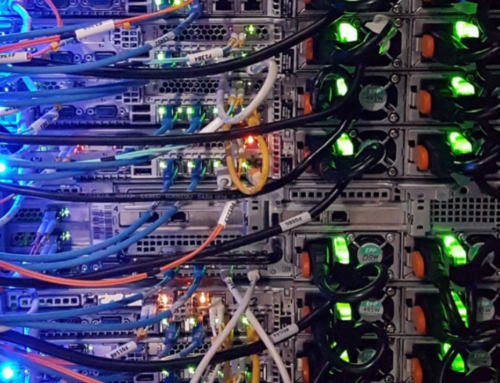One of the most important aspects when it comes to data centers is ensuring that your data is secure. Breaches in security can result in losses not only for the data center itself but also for all the clients whose data they store. For this reason, knowing the top dangers that threaten data centers is important in order to help keep all the data secure.
Keeping data safe and secure is a data center’s number one job. The biggest risks data centers face can be condensed down to two key areas: internal and external risks. In this article, we’ll focus on internal risks. Here are some of the most common internal dangers for data centers and some ways you can combat these threats, such as using data center cooling technologies.
Power
One of the biggest risks data centers face internally is loss of power. Should there be a power outage for whatever reason, there will also be no data. The data center’s electrical distribution equipment is the most critical area in which disaster could strike. Combat this by ensuring that your data center has a back-up power supply. Ensuring data center power distribution by having multiple power sources available for use means your data will be there when your processes call for it.
Similarly, if the power systems the data center is using are outdated or not properly maintained, this can also cause problems. Equipment manufacturers release regular patches to the firmware that addresses security threats, adds new features, and eliminates errors. Make sure that you keep your power systems up to date and perform the regular maintenance suggested by your equipment’s manufacturer.
Cabling
Issues with cabling is another major area that threatens the security of data center services. Having the correct cabling, and no more cabling than necessary, is incredibly important for the continued function of data center cooling technologies. If there is unnecessary cabling through the data center, this will adversely affect the ability for the server to reject heat. Often, a cable will be placed without removing the pre-existing cable. You can combat this by having strict protocols about when and where a cable is laid as well as when it’s removed.
Issues with cabling also include broken or bent cables, freestanding cables, and unlabeled cables. These issues can be combated through increased attention to maintenance.
Over-Heating
Over-heating poses another major risk to data centers. With so many computers and so much power operating at all times, overheating becomes a very real possibility. As much as 40% of the total operational costs for a data center come from the energy needed to power and cool the massive amounts of equipment data centers require. This is where the importance of data center cooling technology comes in. Without cooling systems in place, the data centers could face the very real risk of overheating and losing data temporarily, if not completely.
Should the risk of overheating also be coupled with poor fire-suppression resources and protocols, your data center is even more at risk. Whether these resources are poorly maintained or cut altogether for cost-saving purposes, a bad scenario could get worse that quickly.
In short, the biggest risk data centers face is poor data center maintenance and lack of emergency protocols. With so much at risk, there must be recovery protocols in place and maintenance routines that are taken seriously. Contact LDP today for mission critical support solutions that will keep your data center up and running, even in the face of the most threatening dangers.






